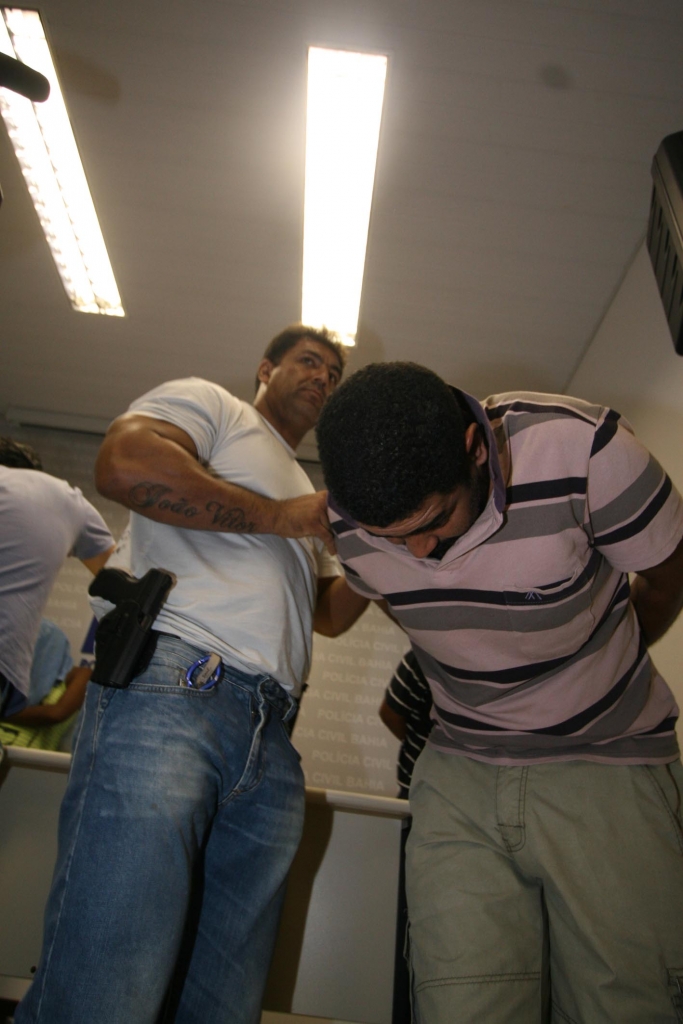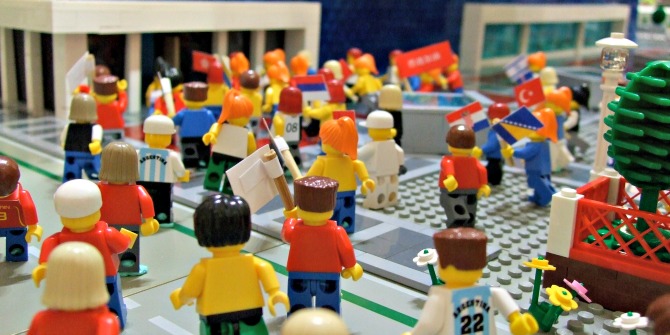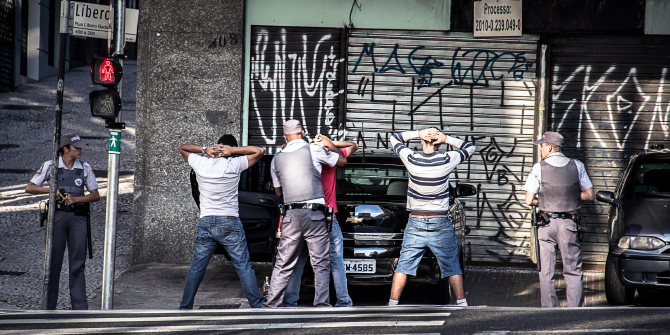Drawing on a Sao Paulo-based story from his latest book, Graham Denyer Willis explores the thin lines that separate the categories of ‘police’ and ‘criminals’, and how these boundaries are distorted, crossed and negotiated in everyday life in Latin American cities.
‘Police are as criminal as criminals’ is a common sentiment in Latin American cities. It is not a passing sentiment, either. Throughout the region, the distinction between police and criminals is blurred and grey, believed fungible and always uncertain. Many police commit crimes and many criminals police, or so it goes.
In everyday life and for much theory, this blurring is deeply consequential. And yet, to many outside observers, this distinction is obvious. Police are the state. They are uniformed, governed by laws and accountable to the public, even as they hold a special mandate to be violent. They are the emissaries of formality. Criminals, on the other hand, are those who destabilize, cause unpredictability and sow disorder. They are deviant and problematic. They are emissaries of the informal. In this reasoning, the dissonance between these two worlds is clear. They are separate, distinct, unconnected.
One of these understandings is rooted in everyday life in Latin American cities. The other comes from an idea of the state extracted from life in the Global North –a place with an overlooked and largely assumed history of violence and problematic police.
If many people in Latin America cannot easily distinguish between a police officer and a criminal, it is not because of a uniform or mandate, but, rather, because of confusion of identities, and an inability to trust either.
But how does a police officer know the difference? Consider a story:

Rafael came into the homicide department on account of a resistência seguida de morte –a ‘resisting arrest followed by death’- that had happened earlier that night. It was late and he had been closing up his sister’s store –a very modest shop in a very modest community where they sold candy and other sweets at a cottage scale. The retractable metal door was partly pulled down and Rafael was tallying the money earned from the day. It was night and, being off duty, he was in plainclothes. Gun in hand, a young man burst in through the door. Confusion ensued and Rafael was at a loss to explain what came next. In the aftermath, the young man lay dead on the ground, shot nine times.
Rafael lived down the street, in what the head homicide detective described as “one of the worst parts of São Paulo.” This community, which I call Villa Andre, was “horrible”, he said, almost certainly among the most awful places to live in Greater São Paulo. And yet, this community was also less than a couple of kilometers away from some of the most expensive gated communities in all of Brazil –where personal helicopter traffic buzzes from morning and night. I asked Rafael if there were other police that lived in this neighborhood. “Many”, he said, “I was born there, and so I see it differently than most people see it.” Poor it was, he implied, but it was still the place where he grew up, had family, friends and, now that he was a police officer, police colleagues. Was it unsafe? Yes. He put it in a rather self-incriminating binary: “There are basically two choices for police that live in Villa Andre. Become a criminal or leave the community -except it is too hard to get out, and so you make do. All the police that live in the community grew up there. None moved there after the fact”.
Later in conversation with the head homicide detective, he explained that in Rafael’s shooting of the man, he saw someone ‘making do’. Rafael was a young police officer. This was his first resistência. He was nervous and so he just kept on shooting, even after the man was on the ground. Was this an abuso (an abuse of force)? Maybe.
The detective told me about a recent case of a police officer being killed after a home invasion. He had been shot just because the suspect had seen his police uniform they said. This kind of thing was bad for police, who end up feeling scared and sometimes reacting rashly to violence. He segwayed the discussion to another case he had worked like Rafael’s. There was some doubt about whether in a particular resistência, the officer had gone too far in killing an assailant. As he debated with other detectives whether the police officer should have done what he did, the phone rang. It was a notification of another case, just like the other one, but where the police officer was dead and the assailant long gone.
The detective continued on with his interpretation of Rafael’s case: He was worried about the number of shots. Nine was a lot to come from one police officer. It was a bit excessive. But he seemed to trust Rafael. “He was nervous,” he told me. Shooting someone is a big deal, and it is hard to control yourself –especially when it happens in your own place. “He did go too far, but he will learn how to defend himself properly”. When all the paperwork was done, he went to have a word with Rafael about what was going to happen next. “You’re aware the prosecutor is going to notice how many shots you fired,” said the chief. “You need to practice.” Just tell the prosecutor the truth, that this is your first resistência. You were nervous because it was your first time. Next time don’t shoot as many times, and just aim for the middle.
Another group of police filed in to the room, related to another resistência. Having heard about Rafael’s case, these other police had questions. “Quem matou o bandido? (Who killed the bandido?)” asked one. Rafael stood up to acknowledge. “It was you? Congratulations, my man!” beamed the incoming officers.
For police in Brazil, the categories of bandido and police break down not so much as two groups, but as one defined in opposition to the other. If you are armed and engage in real or perceived criminality, and come from a particular racial and spatial background, you are a bandido. If you are a police officer who engages in criminality, you are a bandido. If you die unceremoniously in a poor part of the city, you are a bandido. In this kind of context, you have a very strong interest in defining what you are not.
In Latin America, as elsewhere, the categories of police and criminal bleed into each other, both figuratively and literally. But deadly police violence pushes back in ugly ways at that blurring. To kill a suspect is to define him as a bandido and yourself, by definition, as something else. It obliterates obvious fogginess, attempting to separate where separation is impossible. For police, this is a bloody and problematic question of life and death, but, also, identity. For citizens, it further obscures identities, resolving little. For theory, it makes the difference between formal and the informal, legal and the illegal, state and non-state, indistinguishable and redundant.
Featured image credit: Klaus Balzano (CC BY-ND 2.0)
About the Author
Graham Denyer Willis is a University Lecturer in the Centres of Development Studies and Latin American Studies, and a Fellow of Queens’ College, University of Cambridge. His first book, The Killing Consensus: Police, Organized Crime and the Regulation of Life and Death in Urban Brazil (University of California Press, 2015), is based on three years of ethnographic research with homicide and other detectives of the Civil Police in Sao Paulo, Brazil.
The views expressed on this post belong solely to the author and should not be taken as the opinion of the Favelas@LSE Blog nor of the LSE.
Please read our comments policy before commenting.





